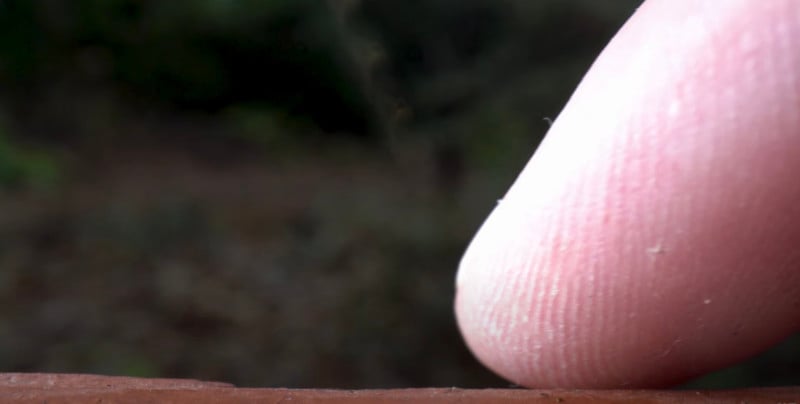
Dr. Adrian Smith is well-known for this slow-motion study of insect species and that skill set was perfect for a detailed study of insects known as “springtails.” They normally move so fast that normal cameras, as well as the human eye, cannot perceive their motion.
Springtails, or collembola Sminthurides aquaticus, are semi-aquatic globular insects that are very small and move incredibly quickly. Because of this, the amount of research that had been done on them was extremely limited. Dr. Smith says that he was on a mission to capture and see what the little insects do on a level of detail that no one had previously attempted.
Smith shows that the little insects “jump” by propelling themselves off the surface and backflipping repeatedly at a wildly fast rate. When captured with a normal camera, the most that is revealed between frames is a blur that only barely shows that the insect is flipping, but is devoid of any other detail. It takes a very fast framerate to see more.

Even in his first attempt last year shooting with a camera capable of capturing 6,000 frames per second, Dr. Smith notes that such a frame rate was still not fast enough to get a detailed look at how exactly the insects are capable of propelling themselves with such force.
![]()
In the video above, Dr. Smith notes that he believes that based on his tests and recordings, the insects are most in control when they are on the water instead of on dry land. When on water, which they can walk on thanks to water-repellent appendages that take advantage of surface tension, the springtails can shoot themselves forward at about a 45-degree angle using a spring-loaded appendage tucked underneath their bodies known as a fucula. When not on water, the trajectory of the insects was a lot less predictable, with some flying forwards, some backwards, and some straight into the air.
Shooting at over 10,000 frames per second, more is revealed, but Dr. Smith wasn’t satisfied: there were two points that were still moving too fast to get a detailed picture of what exactly was happening.
![]()
To get those details, Dr. Smith upped his framerate.
“It’s taken me through a few models of high-speed Phantom cameras to resolve the movements that power their jumps, but by filming them at over 73,000 frames per second, I think I got it,” he tells PetaPixel.
At that speed, his camera could only shoot in black and white and would only capture an image area that was 240 pixels high. It wasn’t a lot of resolution, but it was enough to see everything clearly and unobscured by motion blur.
“I don’t think it’s hyperbole to say no one has seen a springtail like this before,” Smith says. “I feel like it’s not exactly right to say I’m filming these animals in slow motion. I’m not using the camera to exaggerate or prolong what they’re doing: I’m just trying to see it. I’m trying to meet these animals at the timescale at which they’re behaving and that turns out to be really, really hard.”
For more from Dr. Adrian Smith, make sure you subscribe to his YouTube Channel. You can also follow him on Twitter and Instagram.
Image credits: Photos courtesy of Dr. Adrian Smith and used with permission.

